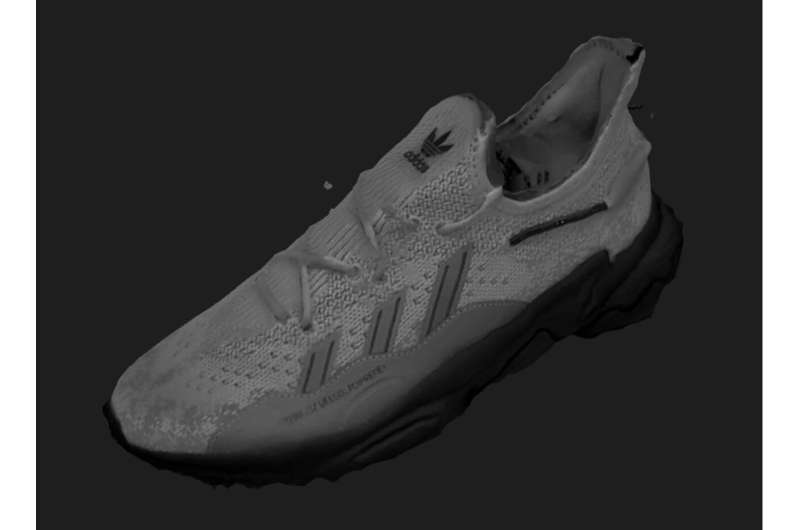This article has been reviewed according to Science X's editorial process and policies. Editors have highlighted the following attributes while ensuring the content's credibility:
fact-checked
trusted source
proofread
UK police to trial new forensic footwear identification process

Forensic experts in the U.K. are taking new steps to identify criminals caught on CCTV using the shoes they are wearing.
Staffordshire University and West Yorkshire Police have teamed up to develop a new system that uses 3D scanning technology to help identify the type of footwear worn by criminals. While the analysis of footwear impressions left at crime scenes is an established practice in policing, this new approach focuses on the upper part of the shoe to link offenders to a crime.
Claire Gwinnett, Professor of Forensic and Environmental Science, said, "The number of cases in which footage from body worn cameras, CCTV and even phones is used to catch perpetrators has increased. However, criminals often conceal their face and wear dark clothing which means there are few identifying features apart from their shoes. The big questions [are], how can you identify these shoes and how useful is this as evidence?"
The research team has devised a fast, effective, and affordable method for capturing data from footwear uppers by creating an interactive 3D image of a shoe under both visible light and infrared light.
"Most CCTV cameras use near infrared light during nighttime recordings, which can make the footwear look completely different than in natural light," Professor Gwinnett commented. "So, it was important to develop a method that will help police to quickly identify the type of shoe, how common it is, and importantly, what it looks like under different lighting conditions."
Postdoctoral researcher Dr. Megan Needham has been trialing the method which uses a photography light box, turntable and camera. She explained, "3D scans, rather than still images, enable users to align the 3D model to the angle of the shoe captured on a CCTV camera. We record a video of a shoe on the turntable under each lighting condition, extract the frames and put it into software that stitches it all together to make a 3D model. The idea is that you can set it up and leave it to record then come back when it has finished."
She added, "It is a quick and simple process, taking around 30 minutes in total. The equipment needed for this process costs less than £500. The aim is for this method to be used by footwear units across the nation, and in the future detention officers in a custody suite to scan a suspect's shoe."
Megan is currently refining the optimum settings for the process before it is piloted by different police forces in the new year. In future, it is hoped that this method could be adopted to populate a national database of footwear uppers which could be accessed by police professionals across the country.
Selina Reidy, an Identification Expert from West Yorkshire Police, said, "With the increasing quantity and improving quality of surveillance footage, we are receiving a growing number of requests to identify the make and model of footwear caught on camera. Having access to a searchable database of interactive, 3D models of footwear under both white and near infrared light will greatly improve the accuracy and efficiency of the current process. This work will expand and improve the current evidence base and, with continued development, will provide an additional forensic capability that informs police investigations."



















